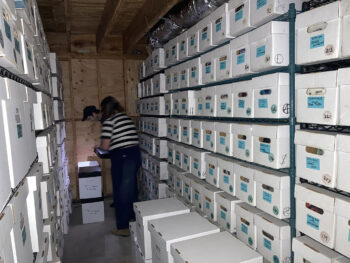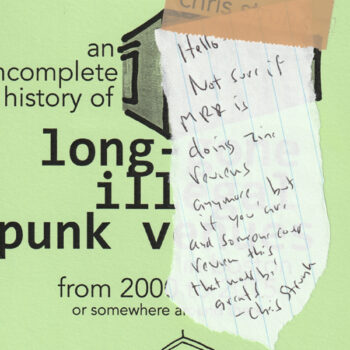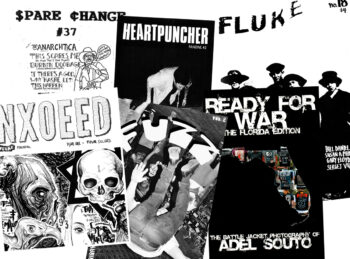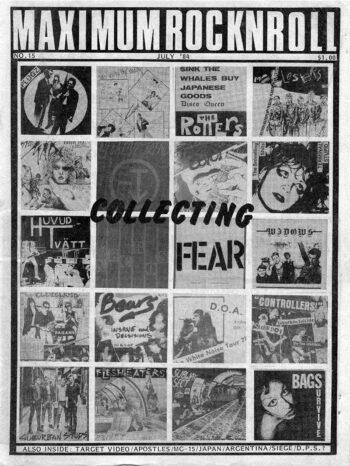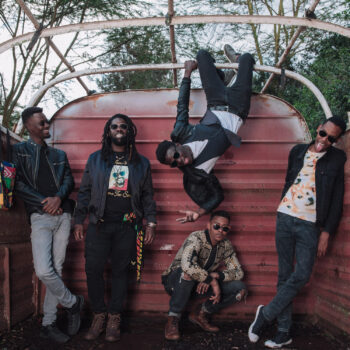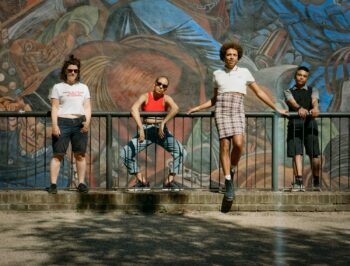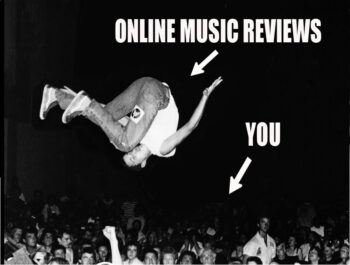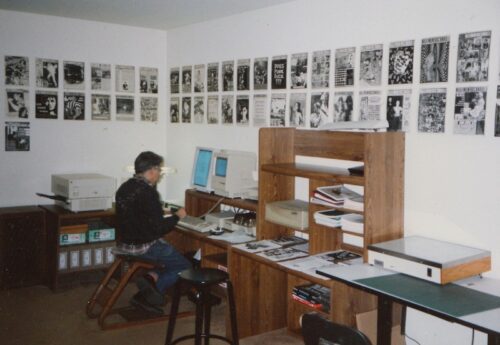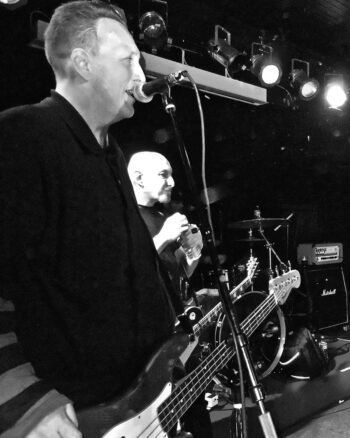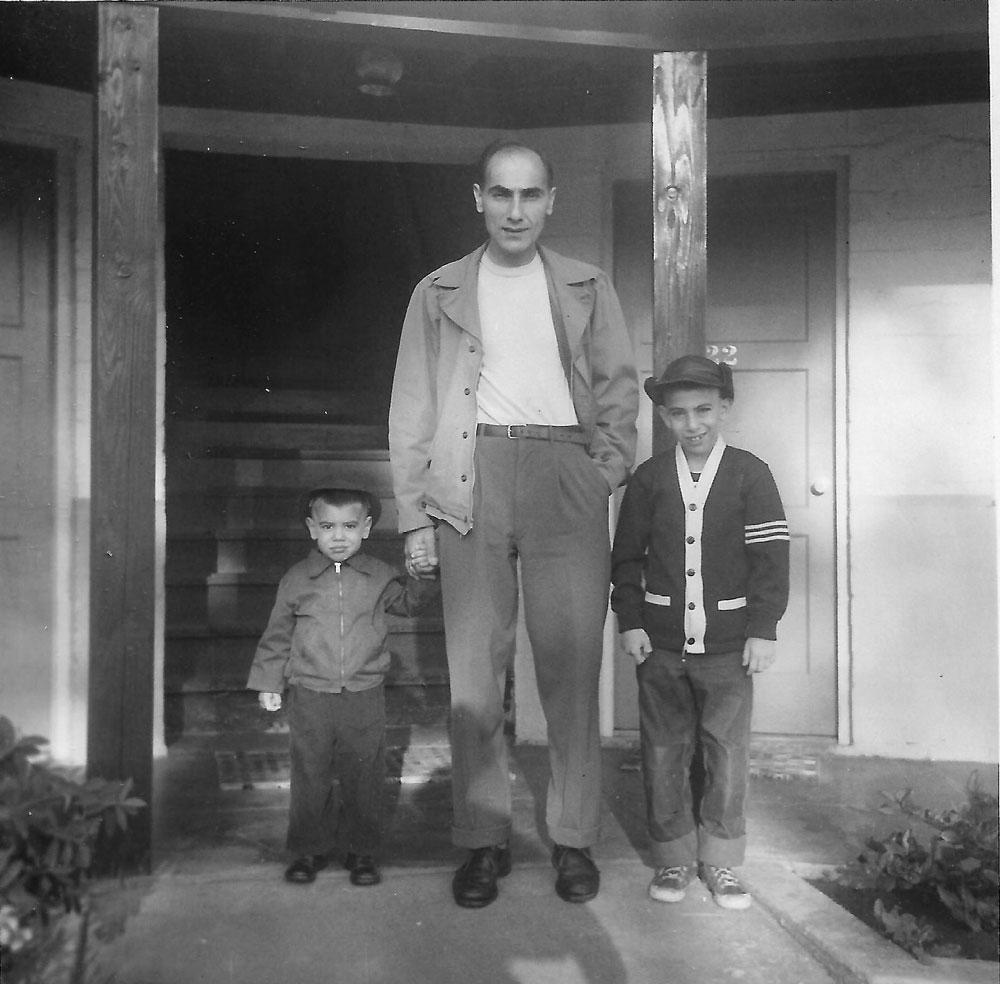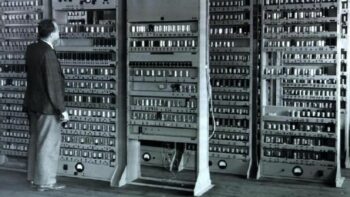A report from South Korea!
Here’s a MRR.com exclusive scene report from South Korea, written by Dave Hazzan with photos by Jon Dunbar…
UPDATE: Bonus photos added to the end of this article!
 In newly affluent, newly democratic, and newly open-minded South Korea, a new punk scene is developing. It’s not what it could be, but something is afoot.
In newly affluent, newly democratic, and newly open-minded South Korea, a new punk scene is developing. It’s not what it could be, but something is afoot.
Known largely in the West for its psychotic dictators to the north, and to the rest of Asia for its plasticized pop stars, Korea still fails to have a punk scene worthy of its size. Ten million people live in Seoul and another thirteen million or so live in the suburbs around it, but on a good night it’s hard to find more than 300 people out to a show.
Seoul is so big that it’s impossible to describe what it looks or sounds like. The east and north of the city are more undeveloped and raw; south of the Han River is newer and more synthetic; in the west it’s somewhere in between. But these are enormous generalizations. Whereas southern Gangnam is the best place to have your eyes widened, nose sharpened and asshole bleached, right next to it you can find rundown tenements hilariously called “villas” where old ladies supplement their non-existent pensions by carting trash through the street like mules.

In the northwest, surrounded by middling neighborhoods, is Hongdae, entertainment capital of Korea and home of the Korean punk scene. On one very sticky July night between monsoons, RUX, the 100 BLOSSOM CLUB and HUMPBACKS played a free show in a playground surrounded by bars. Hongdae, named after the neighborhood university, is described by Visit Korea as “the center of Korea’s youthful nightlife. Many of Seoul’s idiosyncratic clubs that draw the younger set are clustered in the area.” So too are three-quarters of Korea’s punk shows.
According to Hong Gu, who has played in CAPTAIN BOOTBOIS and CHADBURGER, and describes his day job as “selling yarn,” the scene “is only in Hongdae. The Korean punk scene is Hongdae!” Hong thinks it’s “shameful to call it a scene. Only a few bands are active.”
No doubt the scene is small, and everyone would like it to get bigger. But some of those with experience in bigger scenes see this as somewhat of a gift. Jonah Love, who comes from nowhere in Alaska, but when to school in Vancouver, says there are fewer shows but bigger crowds than Vancouver and people are more pumped about the music. “A lot of people coming out to play are not concerned about the size of the audience, or not to make it, they just want to hear good music.”
The mix of foreigners to Koreans that night was about 1:4, but it’s hard to tell who was there for the show and who was just passing through a well-trafficked park. Despite complaints by some that image too much a part of the scene, there were people dressed in all ways. Most were fellating cans of beer from the neighboring corner store, or drinking soju cocktails from a table stand erected by a savvy bunch of kids. (There are no open container laws in Korea.) People were smiling, there was no fighting and people seemed to really enjoy the bands, who were uniformly excellent. Friendliness is the vibe most people take away from the scene.
Caroline Pardue, 30, is an American who has taught English here for two years. “I love that it’s Koreans and foreigners coming together. I don’t think I would have met any of these people otherwise. But we have this common bond in music. It really breaks down a lot of cultural barriers.” Other people had stories about going to shows alone and walking out with twenty new friends.
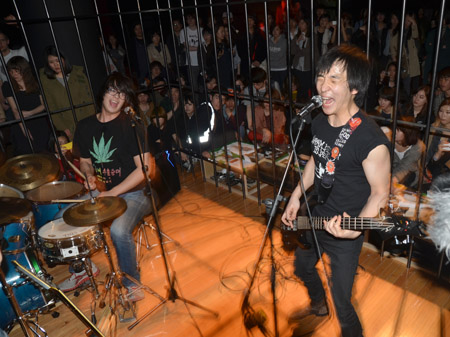
Park Ha-ru, 20, works at a hot dog shop and feels the same way as Pardue. “Everybody is friends here,” she says, “skinheads, punks, rockers, even girls!” Though “even girls” might seem trite to the Western ear, in seriously sexist Korea it means something. Another young girl, Yim Ye-ji, says, “It’s a small scene so everyone is friendly. You go to a skinhead show, crust show, hardcore show, I can listen to everything, because they’re all friends. It’s the same people, mostly.”
Not everyone necessarily agrees. Our yarn seller Hong Gu argues that it was all together, but since image-conscious Korean punks hit the internet they’ve decided that “‘Oh, I’m a skinhead! A skinhead is this, a punk is this!’ Five years ago, people were together.”
An eighteen-year-old who would only give his name as “Hound” says that the scene has too many “fake punks” and, “A punk should be left-wing. Here there are many fascists [in the punk scene]. Other punks, they pick on me. I’m annoyed about this.”
However immature this might sound, I have respect for the young Mr. Hound. He has two piercings through the lips, one through the septum and an enormous tattoo on his chest that I couldn’t read. Whereas in California this might be the uniform of every second chartered accountant, in Korea it’s a recipe for banishment. Which brings us to bigger issues of punk and Korean society.
Confucianism, or yukiyo, largely defines Korean society. A social philosophy rather than a religion, yukiyo is about where you stand on the social hierarchy. The youth are supposed to defer to elders, women to men, students to teachers, children to parents, workers to bosses and so on. This happens even among Korean punks.
Added to this is a massive pressure in Korea to conform. The idea of just being yourself is anathema to most Koreans — you must fit in. Failure to do so can mean you’re ostracized and that can mean no work, no means of sustenance, and the next thing you know, you’re on the streets scavenging for pop bottles at the landfill. Though the situation is better than what it was, it’s still not good. By comparison, North America in the 1950s was much, much freer.
None of this is conducive to a dynamic punk scene. Korea is saturated with bad pop music from manufactured groups discovered on TV “idol” shows and sold into slave-like contracts for the rest of their miserable careers, or at least until they’re not “cute” enough to sustain a fan base. (A fan base, incidentally, that spans from toddlers to the geriatric, men and women.) The pressure to conform means that it is very difficult to get away from “K-pop.”
Yim Yeji says, “Punk is not really attractive to Korean people. There’s not a lot of chance to see punk shows. There’s too much K-pop.” Hong Gu says, “The media is all K-pop, Idols, every day. Even MTV.”
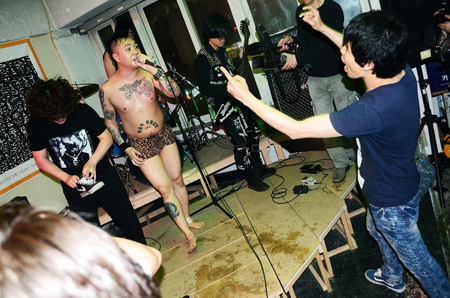
Whatever one thinks of corporatized “punk” bands in America like Green Day or the Offspring, they are often the doorways that lead people to better punk music. The Korean versions of these bands are very hard to find on TV or the radio here, though they do worm their way through the cracks. It was only after Koreans overthrew their US-backed dictators in 1988 that they could begin to listen to what they wanted, though censorship stayed well into the 1990s. The first punk bands in Korea, like CRYING NUT and NO BRAIN, didn’t begin until the late nineties, when the sound was already twenty years old in the west. Considered legends now, though occasionally seen on television, are more likely to be seen and heard about by Koreans through a forwarded YouTube clip.
Won Jong-hee, who plays for RUX, another of the original bands, says that CRYING NUT and NO BRAIN are paving the way to mainstreaming Korean punk. He insists that this is not a bad thing, especially in a Korea under the yoke of conformity. These original bands “are trying to smooth the transition to mainstream music. It’s very natural and Korean music needs that, for fans to be able to go to the department store and choose what you want to hear.”
Others aren’t so sure. Hound would identify it as fake punk, and Jon Dunbar, who’s been following the scene for years, argues that it could just end up a new form of K-pop. “K-pop websites are beginning to take notice of Korean underground music, which I’ve seen getting branded as K-indie, a despicable term, and K-pop fans are starting to notice it too, but usually don’t have the discriminating tastes to be able to identify it as anything other than a new flavor of K-pop. It’s Korean first and a specific type of music second. I hope that the Korean punk scene, what little there is left of it, can avoid that pitfall.”

A second, significant obstacle to the punk scene is mandatory military service — every able-bodied male must serve two years and there are no exemptions for conscientious objection. According to Dunbar, “Military service is a big hindrance in the lives of almost all Korean males in their twenties and thus causes problems for the bands, which are usually made up of males in their twenties. It’s not uncommon for a band to disappear for two years.” These bands often don’t get back together, the idea being that after military service, it’s time to get serious and get a job.
Won says, “After military service, their parents force them to be men rather than boys hanging out. Men, who chase paper, chase money.”
Some punks agree with military service. Nam Bum Joo of SKASUCKS insists it’s “our duty” given that the Korean War never officially ended. Hound, on the other hand, would rather leave the country than serve. No matter how you feel about it, it certainly breaks up a lot of bands.
Sex can also break up a scene so small. In Korea, it’s strictly taboo to “just be friends” with your ex-mate. You’re expected to split your friends and move on. That means, according to Won, that a lot of people don’t show up anymore for fear of running into their exes at the small shows.
Finally, there’s work. Koreans are famous for the amount of work they do. Though it’s not always productive, salaried Koreans can spend up to sixteen hours a day at the office. That means that after finishing school — and military service if you’re swinging dick — you’re guaranteed a life of long drudgery that includes little time for punk. Kang Jun, who plays with GEEKS and VICIOUS NERDS, works at a Seoul I.T. company. “I worked today [it’s Saturday] and I work every day twelve to thirteen hours. It’s so tiring. I don’t think about punk or bands after work. I just want to sleep.”
“But,” he adds, “if I see the show, like today, I can think about punk and rock and my band, and the other bands ask for me. I feel a lot better.”
Won Jong Hee: “In Korea, everybody here is very busy. It’s not laid back, like people in California, Australia. We’re always pushing.”

Jon Dunbar says there are virtually no professionals in the Korean punk scene. “Unlike where I came from, where the top punk bands would have guys with engineering degrees or studying to be medical doctors, the Korean punk scene is mostly made up of the downwardly mobile people, who at a young age got off the track of Korean education and career. Once you lose your way, you pretty well have no hope of catching up again in this lifetime. And while there is something to be said for shunning the mainstream, there’s not really enough on the fringes to sustain people. Unless Korean society changes, that’s a lot of people with pretty much no prospects.” Though some like Won make livings as tattoo artists, or others run their own businesses, it’s a harder slog than in the west.
But then there are ways that punk fits into such a society. Won says, “Everything is done so fast in this country. It fits with the aggressive beat of punk rock.” It also explains the popularity of metal in Korea.
In a sense, with all this pressure, it’s amazing that punk is not a bigger phenomenon than it is. Park Ha Ru says that in the Korean punk scene, “I can express my angry feelings,” in a way she can’t anywhere else.
The day after the playground show, there was another show in the east end of the city. Located in a basement space that you need a fucking satellite system to find, DGBS is the Korean acronym for Anti-Communist Center. The Korean CIA used to run the center, and though no one knows exactly how the centre was used, it’s rumored to have been used to torture dissident students in the past. The name was accorded to it ironically. According to Jang Sun Gun, “We use sonic torture now.”
Seven bands played and admittance was 15,000 won (about $13) a pop. If this sounds steep, trust me when I say that no one sees much of it and that similar prices are common in the scene. Much less commercial than the bands that played the playground, the show at DGBS was hot, loud and aggressive. People brought their own beer (if they brought any) and there were many more Koreans than foreigners at this show.
An exciting addition was having Japanese sludge band ZOTHIQUE play. On their first tour of Korea, guitarist and singer Shusuke Shimonaka had nothing but praise for the Korean scene. After a gig the night before at Low Rise, a small Seoul club, Shimonaka said, “We’ve never had such an atmosphere back in Japan. It seemed a much more DIY atmosphere.”
He adds, “In Japan we’re all a pay-to-play underground. We don’t have a free space, only clubs and live houses. We have no space to practice other than a studio. It costs a lot of money.” People have to bring their own gear, and it’s competitive. “I feel everyone is helping each other in Korea. Everyone is doing what they can to keep this scene alive. That’s my feeling at least. There’s community.”

Korea routinely compares itself to Japan and Shimonaka probably didn’t know the huge praise he was lavishing on Korea. Koreans have a historical prejudice — hatred might be too strong a word, but not by much — for Japan and the Japanese. The issue largely revolves around the Japanese occupation of Korea from 1910-1945, sex slavery during World War II and a current battle over two Korean-controlled islets in the East Sea, called Dokdo in Korean and Takeshima in Japanese (The East Sea is the Sea of Japan in Korea; the name of the sea is also a problem).
But Shimonaka understands. “It’s no problem,” he says, “We talk about that very frankly and laugh about it.” Anyone who has asked a Korean about grievances against Japan knows that “laughing about it” is not a common way of dealing with the problem.
Kwon Yong Man plays drums for BAMSEOM PIRATES, an excellent bass/drums grindcore band that started off the show. He says the scene is friendly but that Bamseom “separated from the Korean punk scene,” though he still attends shows and says he is welcome there.
“[The scene] is friendly now. There was Skunk Hell,” an old club in Hongdae, since closed. “When I visited Skunk Hell when I was young, the shows were great, but I don’t know how friendly they were. There were many skinheads and macho guys, so I couldn’t get friendly with them. It was a violent brotherhood. Many friends of mine were beaten by skinheads there.”
Kwon feels differently from many of the punks I interviewed, in that he doesn’t think the scene is terribly united. But, he adds, “I go to shows in Hongdae and feel welcome.”
The Korean punk scene seems to be almost defined by its size. Dunbar comments, “There is simply little to no room for growth in the Korean underground music scene. Already there are enough musicians, enough clubs, enough of everything except listeners.”
So the moral of this story is thus: if you find yourself in Korea, go to a show. And be nice about it.
— Dave Hazzan
Bonus photos from Jon Dunbar:
[portfolio_slideshow exclude=”12998,12999,13000,13002,13003,13004,13020″ autoplay=true random=true]

